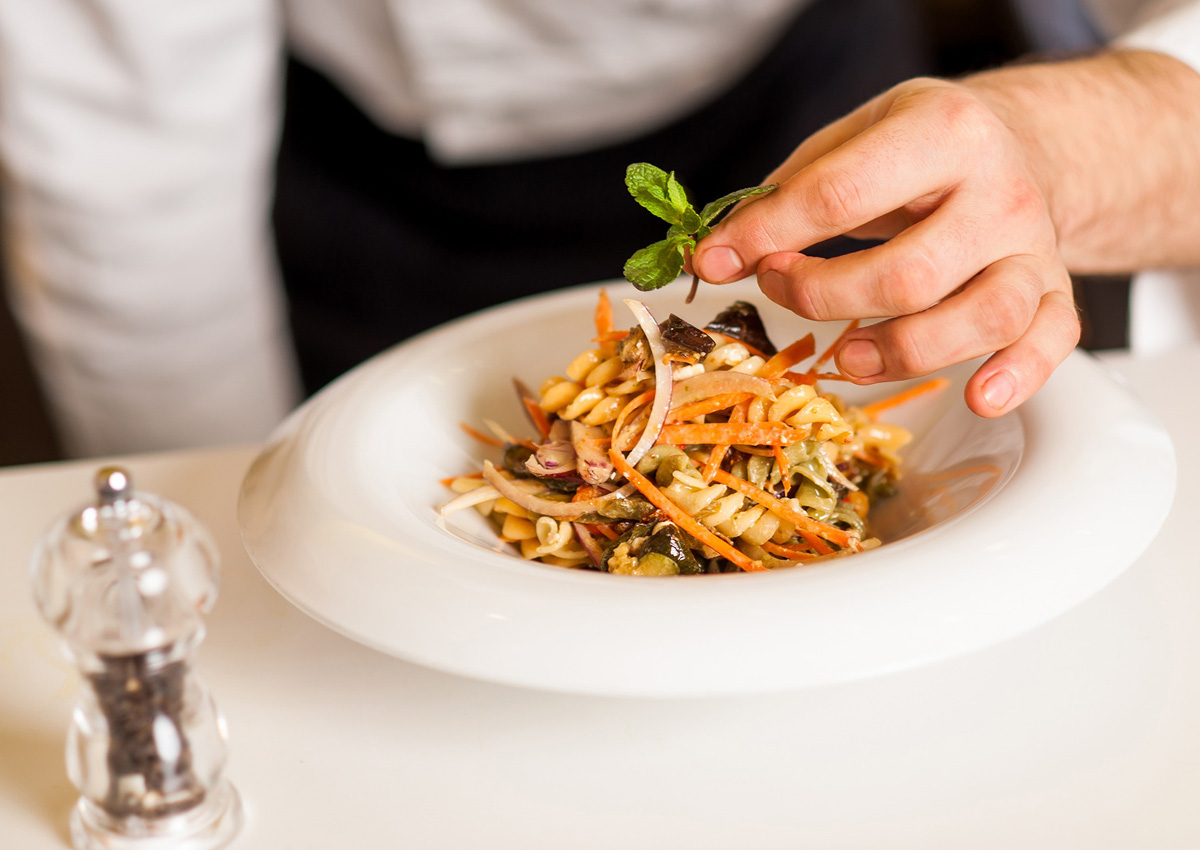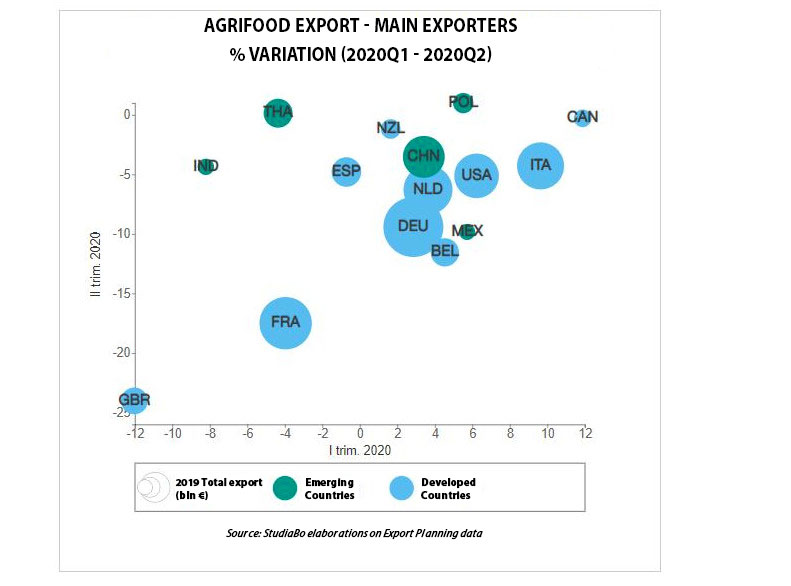
Despite the strong global crisis fueled by the Coronavirus pandemic, there are still many opportunities for the Italian agri-food sector, especially in the US market. According to an analysis by Bper, in the coming months Italian food exports will in fact be able to enjoy the absence of additional duties, taking advantage of competing European producers and thus gaining market shares.
THE GLOBAL SCENARIO
In the first quarter of 2020, almost all major exporter countries recorded positive performances, with the exception of Great Britain (-12.5%) and France (-4%). Italy recorded one of the best growth performances (+10%), so much so that it won the bronze medal of exporting countries in value on a global scale.
Click here to discover the authentic Italian food and beverage on Italianfood.net platform
In the second quarter, however, the contraction was recorded by almost all exporting countries. Also in this period, one of the worst performers was France, which reduced its exports from €8.7 billion in Q2 2019 to €7.2 billion in Q2 2020. This significant drop is due in part to the 25% additional import duties imposed by the United States on some European products, including French wines. Champagne has suffered a drop in exports to the U.S. of over €100 million (-67%), and French still wines of €150 million (-43%). As a result of this contraction, in the second quarter of 2020 Italy became the leading exporter of wines (both still and sparkling wines) to the United States.

ITALIAN FOOD EXPORTS GET GOING
In the second quarter of 2020, Italian food exports decreased, but some important exceptions must be noted: Oil, condiments and spices on the one hand, and Rice, pasta and flour on the other. The first category’s export sales grew by +9.2%, part of which thanks to higher sales in the United States. Also in this case, the additional duties imposed by the USA administration hit Spanish olive oil (-50%), but not Italy’s (+24%). Exports of Italian Rice, pasta and flour grew by +29%, partly thanks to sales in the United States (+71%).
The first estimates for the third quarter of 2020 see a partial recovery in global demand for agri-food products from the EU, but the trend will remain negative (-3%). On the contrary, a period of growth is expected for Italy (+3%), with Rice, pasta and flour (+16%) and Oil, condiments and spices (+7%) as driving sectors.

